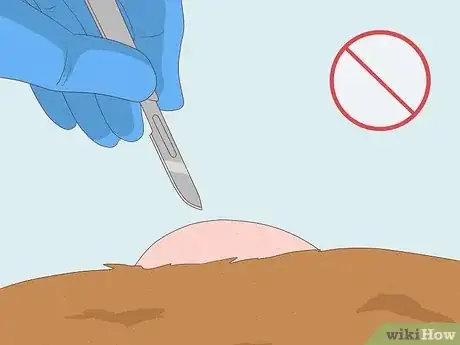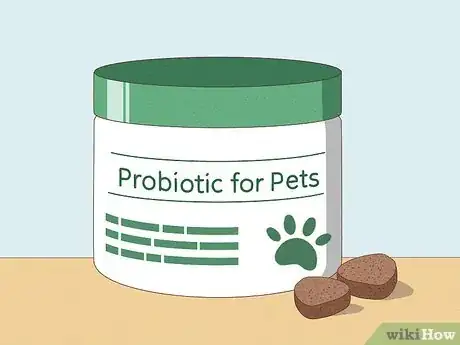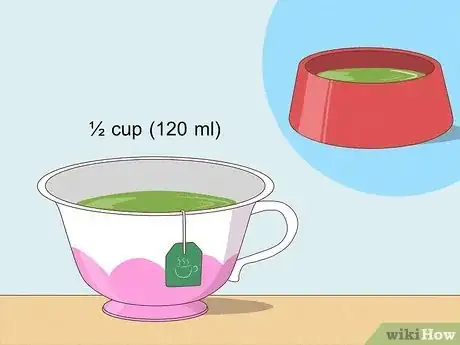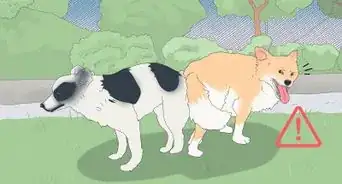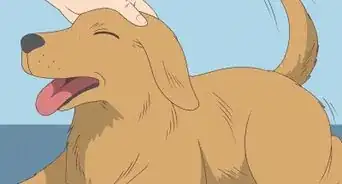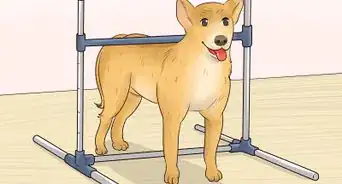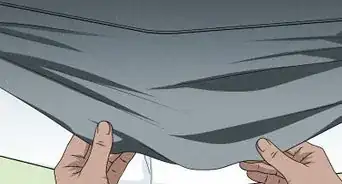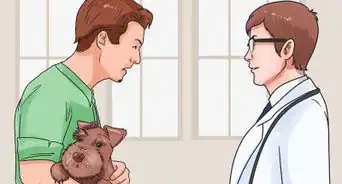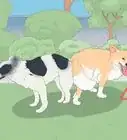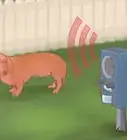This article was co-authored by Natalie Punt, DVM and by wikiHow staff writer, Amber Crain. Dr. Natalie Punt is a Veterinarian and the Founder and CEO of mPet- a smart phone app for pet owners to store, manage and transfer their pets medical records and health information. She specializes in small animal emergency and general medicine and veterinary practice economics. Dr. Punt holds a BS in Biochemistry and Molecular Biology from The University of California, Davis, an MS in Biochemistry from The University at Buffalo, and a DVM from Western University of Health Sciences.
There are 15 references cited in this article, which can be found at the bottom of the page.
This article has been viewed 14,621 times.
If you've recently noticed a squishy lump under your dog's skin, don't panic! It's probably a benign fatty tumor called a lipoma. Lipomas are very common and they usually don't pose any health risks, but you may want to get rid of the lump to make your dog more comfortable. We can help! In this article, we'll explain what causes lipomas and how to identify them. We'll also share the best natural remedies for shrinking your dog's tumor at home. Keep in mind that our advice only pertains to lipomas (fatty tumors)—these remedies aren't meant to treat any other type of tumor.
Steps
Expert Q&A
-
QuestionHow can you tell the difference between a lipoma from a cancer in a dog?
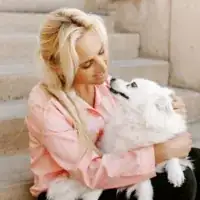 Natalie Punt, DVMDr. Natalie Punt is a Veterinarian and the Founder and CEO of mPet- a smart phone app for pet owners to store, manage and transfer their pets medical records and health information. She specializes in small animal emergency and general medicine and veterinary practice economics. Dr. Punt holds a BS in Biochemistry and Molecular Biology from The University of California, Davis, an MS in Biochemistry from The University at Buffalo, and a DVM from Western University of Health Sciences.
Natalie Punt, DVMDr. Natalie Punt is a Veterinarian and the Founder and CEO of mPet- a smart phone app for pet owners to store, manage and transfer their pets medical records and health information. She specializes in small animal emergency and general medicine and veterinary practice economics. Dr. Punt holds a BS in Biochemistry and Molecular Biology from The University of California, Davis, an MS in Biochemistry from The University at Buffalo, and a DVM from Western University of Health Sciences.
Veterinarian Lipomas are a type of cancer but they're considered to be more benign, meaning they grow as tumors (with cells behaving abnormally that can't control their growth). There are a couple of things you can do to distinguish between lipomas and other forms of cancer—one is a fine needle aspirate, where you use needles to collect a population of cells from different places within the mass. However, this method isn't always comprehensive. A better, more thorough way of doing it is taking a biopsy, which is where you sample and test a small piece of tissue.
Lipomas are a type of cancer but they're considered to be more benign, meaning they grow as tumors (with cells behaving abnormally that can't control their growth). There are a couple of things you can do to distinguish between lipomas and other forms of cancer—one is a fine needle aspirate, where you use needles to collect a population of cells from different places within the mass. However, this method isn't always comprehensive. A better, more thorough way of doing it is taking a biopsy, which is where you sample and test a small piece of tissue.
Warnings
- You may have heard of other natural remedies, like certain herbs and tinctures, that can help with lipomas. "Natural" doesn't always mean "safe," so avoid dosing your dog without professional guidance. Make an appointment with a holistic vet to talk about other natural remedies and treatments.⧼thumbs_response⧽
Expert Interview
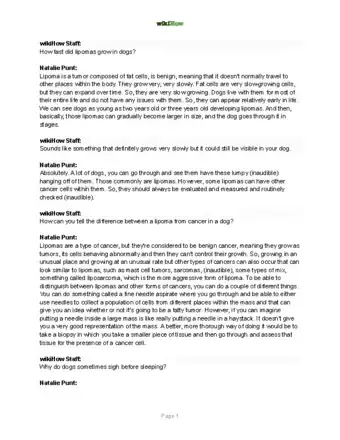
Thanks for reading our article! If you'd like to learn more about taking care of a dog, check out our in-depth interview with Natalie Punt, DVM.
References
- ↑ https://vcahospitals.com/know-your-pet/adipose-lipoma-tumors
- ↑ https://www.southernazvets.com/lipomas-lumps-dogs-common-causes/
- ↑ https://vcahospitals.com/know-your-pet/adipose-lipoma-tumors
- ↑ https://www.amcny.org/blog/2018/03/07/should-you-be-concerned-about-fatty-tumors-in-your-dog
- ↑ https://www.youtube.com/watch?t=26&v=vG75QyFTxOU&feature=youtu.be
- ↑ https://pawsandclawsanimalhospital.com/fatty-lipomas-in-dogs/
- ↑ https://www.youtube.com/watch?v=vG75QyFTxOU&t=117s
- ↑ https://www.youtube.com/watch?v=vG75QyFTxOU&t=224s
- ↑ https://www.youtube.com/watch?v=vG75QyFTxOU&t=180s
- ↑ https://www.akc.org/expert-advice/nutrition/fish-oil-for-dogs/
- ↑ https://vcahospitals.com/know-your-pet/fish-oil
- ↑ https://ivcjournal.com/treating-canine-lipomas/
- ↑ https://www.youtube.com/watch?v=vG75QyFTxOU&t=67s
- ↑ https://www.youtube.com/watch?v=vG75QyFTxOU&t=47s
- ↑ https://www.southernazvets.com/lipomas-lumps-dogs-common-causes/
- ↑ https://pets.thenest.com/can-give-liver-eat-dog-10092.html
- ↑ https://www.avma.org/resources-tools/pet-owners/petcare/walking-your-pet



